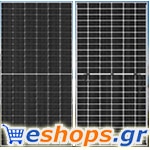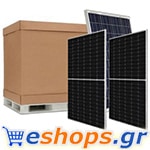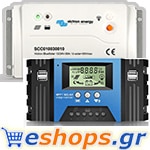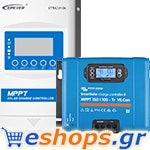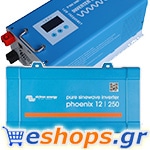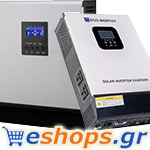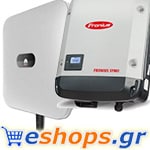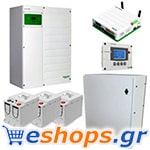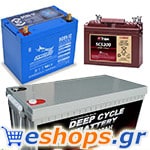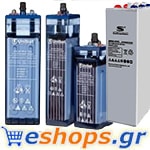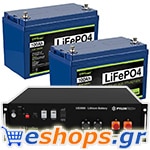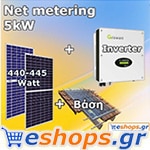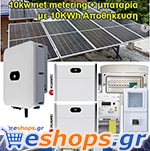MPPT CHARGE REGULATORS Comparison-Advantages PWM vs. MPPT Charge Regulator
MPPT CHARGE REGULATORS
MPPT CHARGE CONTROLLERS: The MPPT charging regulators which are installed in the autonomous photovoltaic systems and determine the appropriate charge levels of the batteries create conditions for the operation of the photovoltaic systems, providing limited to minimal losses in their actual efficiencies.
MPPT (Maximum Power Point Tracking) charge controllers are devices used in photovoltaic systems to optimize the charging of batteries by solar panels. These regulators allow the system to operate at the Maximum Power Point (MPP), achieving maximum efficiency from the solar panels.
MPPT controllers continuously adjust the output of the solar panels to ensure that energy is input to the system in an optimal manner. This is done by calculating the MPP and adjusting the output voltage or current of the panels depending on the environmental conditions.
Some features and aspects of MPPT charge controllers include:
- Conversion Efficiency: Good MPPT controllers are designed to have high conversion efficiency to transfer the maximum possible power from the solar panels to the batteries.
- Assembly (Tracking Speed): The regulator must be able to quickly adapt to changing light conditions to maintain operation at MPP.
- Overcharge and Undercharge Protection: Regulators must provide protection for batteries, preventing overcharging and undercharging, which can damage battery life.
- Display and Data Logging: Some controllers provide screens to monitor performance and other useful information.
- Connectivity: Most MPPT controllers today are designed to connect to other devices or networks for remote monitoring and control.
Using an MPPT controller in a solar system can significantly improve its performance and efficiency.
MPPT CHARGE CONTROLLERS: A conventional PWM charge regulator distributes about 80% of the photovoltaic panel energy generated to the batteries, while about 20% of the remaining energy is lost because the simple PWM charge regulators do not detect the photovoltaic maximum power point.
MPPT CHARGE CONTROLLERS: See the following example for comparing a PWM charger with an MPPT charger:
A. 1000Wp installed photovoltaic panels with a PWM type charging regulator deliver a total power of 1000watt X 0.8 efficiency ratio = 800W approximately 4.0KWh per 24 hours during the summer season.
B. 1000Wp installed photovoltaic panels with an MPPT charging regulator deliver a total power of 1000watt X 0.96 efficiency ratio = 960W approximately 4.8KWh per 24 hours during the summer season.
Result: In the second case, using an MPPT type charge regulator, we gain 800wh (ie about 16% in addition to the energy produced)
Modern solar charge controllers have advanced features that ensure that the battery system is charged accurately and efficiently, as well as features such as the DC load output used for lighting. In general, most smaller charge controllers 12V-24V to 30A have DC load terminals and are used for caravans, RVs and small buildings. On the other hand, most larger, more advanced 60A + MPPT solar charge controllers do not have load output terminals and are specifically designed for large off-grid power systems with solar panels and powerful off-grid converters.


